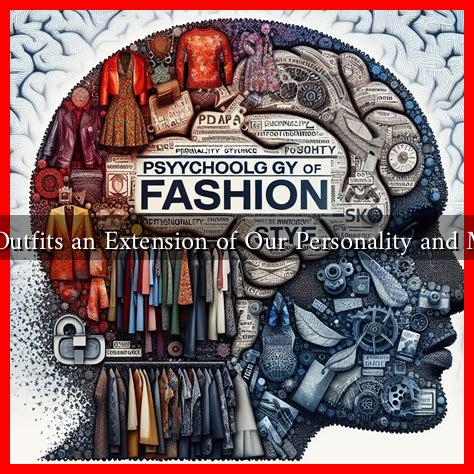-
Table of Contents
Are Outfits an Extension of Our Personality and Mood?
Fashion is often seen as a superficial aspect of life, but it goes much deeper than mere aesthetics. Our clothing choices can reflect our personality traits, moods, and even our social status. This article explores the intricate relationship between outfits and self-expression, backed by research, examples, and psychological insights.
The Psychology of Clothing Choices
Clothing is a powerful form of non-verbal communication. According to a study published in the journal *Psychology of Fashion*, what we wear can significantly influence how we feel and how others perceive us. This phenomenon is often referred to as “enclothed cognition,” which suggests that clothing can affect our psychological states and behaviors.
- Self-Perception: Wearing formal attire can enhance feelings of confidence and professionalism, while casual wear may evoke a sense of relaxation.
- Social Perception: People often make snap judgments based on appearance. For instance, someone dressed in business attire may be perceived as more competent than someone in casual clothing.
- Emotional Expression: Bright colors and bold patterns can reflect a cheerful mood, while darker colors may indicate sadness or introspection.
Case Studies: Fashion and Identity
Numerous case studies illustrate how clothing serves as an extension of identity. For example, a study conducted by the University of California, Los Angeles (UCLA) found that individuals who dress in a way that aligns with their personal identity report higher levels of self-esteem and life satisfaction.
Another compelling example is the rise of the “athleisure” trend, which combines athletic and leisurewear. This shift reflects a growing societal emphasis on health and wellness, allowing individuals to express their active lifestyles through their clothing choices. Athleisure wear not only provides comfort but also signifies a commitment to fitness and well-being.
Fashion as a Mood Indicator
Our outfits can serve as a barometer for our emotional states. Research indicates that people often dress according to their mood, consciously or unconsciously. For instance:
- Happy Mood: Bright colors and playful patterns are often chosen when individuals feel joyful.
- Sad Mood: People may gravitate towards darker, more muted tones when feeling down.
- Confident Mood: Wearing bold, statement pieces can reflect a sense of empowerment and self-assuredness.
Moreover, a survey conducted by the fashion retailer *ASOS* revealed that 62% of respondents felt that their clothing choices directly impacted their mood. This statistic underscores the profound connection between fashion and emotional well-being.
Fashion and Social Identity
Clothing also plays a crucial role in social identity. Different styles can signify belonging to specific groups or subcultures. For example:
- Goth Culture: Dark clothing, heavy makeup, and unique accessories often signify a rejection of mainstream norms.
- Hip-Hop Fashion: Baggy clothes, sneakers, and caps are emblematic of a cultural movement that values self-expression and individuality.
- Corporate Attire: Suits and ties are often associated with professionalism and authority in the business world.
These examples illustrate how outfits can serve as a visual language, communicating values, beliefs, and affiliations without the need for words.
Conclusion: The Power of Outfits
In conclusion, outfits are indeed an extension of our personality and mood. They serve as a powerful form of self-expression, influencing how we perceive ourselves and how others perceive us. From the psychological effects of clothing choices to the social implications of fashion, it is clear that what we wear goes beyond mere fabric and thread. As we navigate our daily lives, our outfits can empower us, reflect our emotions, and communicate our identities to the world.
Understanding this connection can help us make more intentional choices about our clothing, ultimately leading to greater self-awareness and confidence. So the next time you choose an outfit, consider what it says about you and how it makes you feel.
For further reading on the psychology of fashion, you can explore resources like Psychology Today.



